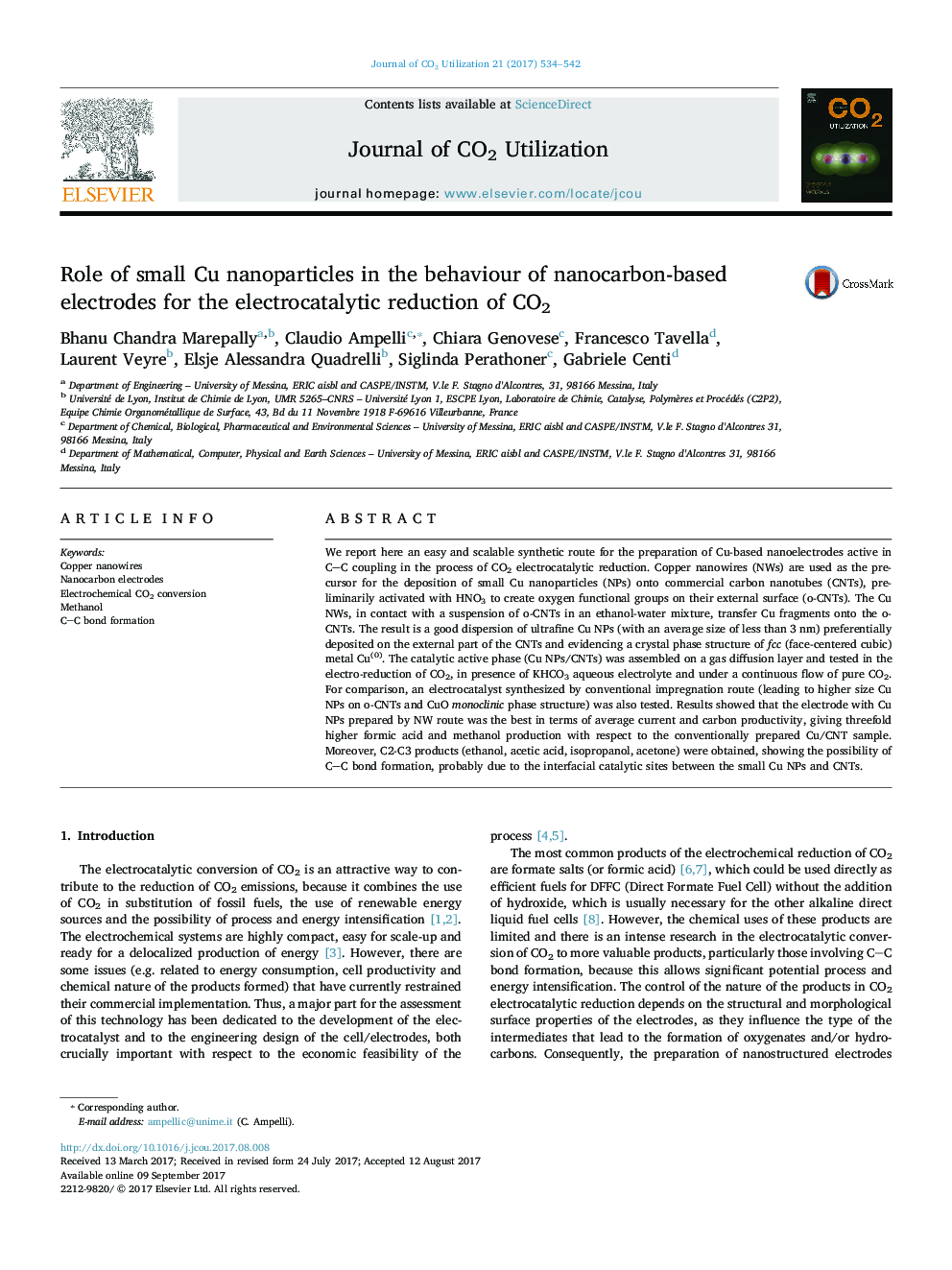| کد مقاله | کد نشریه | سال انتشار | مقاله انگلیسی | نسخه تمام متن |
|---|---|---|---|---|
| 6456152 | 1419841 | 2017 | 9 صفحه PDF | دانلود رایگان |

- Cu nanowires are used as the precursor for the preparation of Cu nanoparticles.
- This is an unconventional preparation of Cu-based nanocarbon electrodes.
- The resulting copper is in the form of small metallic Cu(0) nanoparticles onto CNTs.
- Improved performances are obtained in the electro-reduction of CO2.
- A synergic effect between Cu and CNTs in the formation of C2-C3 products is shown
We report here an easy and scalable synthetic route for the preparation of Cu-based nanoelectrodes active in CC coupling in the process of CO2 electrocatalytic reduction. Copper nanowires (NWs) are used as the precursor for the deposition of small Cu nanoparticles (NPs) onto commercial carbon nanotubes (CNTs), preliminarily activated with HNO3 to create oxygen functional groups on their external surface (o-CNTs). The Cu NWs, in contact with a suspension of o-CNTs in an ethanol-water mixture, transfer Cu fragments onto the o-CNTs. The result is a good dispersion of ultrafine Cu NPs (with an average size of less than 3Â nm) preferentially deposited on the external part of the CNTs and evidencing a crystal phase structure of fcc (face-centered cubic) metal Cu(0). The catalytic active phase (Cu NPs/CNTs) was assembled on a gas diffusion layer and tested in the electro-reduction of CO2, in presence of KHCO3 aqueous electrolyte and under a continuous flow of pure CO2. For comparison, an electrocatalyst synthesized by conventional impregnation route (leading to higher size Cu NPs on o-CNTs and CuO monoclinic phase structure) was also tested. Results showed that the electrode with Cu NPs prepared by NW route was the best in terms of average current and carbon productivity, giving threefold higher formic acid and methanol production with respect to the conventionally prepared Cu/CNT sample. Moreover, C2-C3 products (ethanol, acetic acid, isopropanol, acetone) were obtained, showing the possibility of CC bond formation, probably due to the interfacial catalytic sites between the small Cu NPs and CNTs.
Journal: Journal of CO2 Utilization - Volume 21, October 2017, Pages 534-542